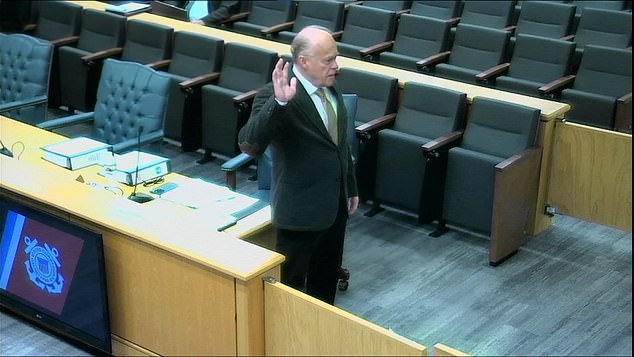An OceanGate passenger who boarded the Titan submersible two years before it imploded last year said today that his mission was aborted because of an apparent mechanical failure that caused the vessel to “spin in circles.”
A U.S. Coast Guard investigative panel heard four days of testimony that raised questions about the company’s operations before the failed mission.
Fred Hagen was the first to testify Friday and was identified as a “mission specialist,” which he and other witnesses have characterized as people who paid a fee to play a role in OceanGate’s underwater exploration.
He said their 2021 mission to the Titanic was aborted when the Titan began malfunctioning and it was clear they were not going to reach the legendary wreck site.
The Titan appeared to be off course on its way to the Titanic, so the crew decided to use thrusters to get the submersible to the wreck, Hagen said, but he noted how the starboard thruster did not activate.
Fred Hagen, an OceanGate passenger aboard the Titan, told a U.S. Coast Guard investigative panel today that the mission he was on was aborted because of an apparent mechanical failure that caused the ship to “spin in circles.”
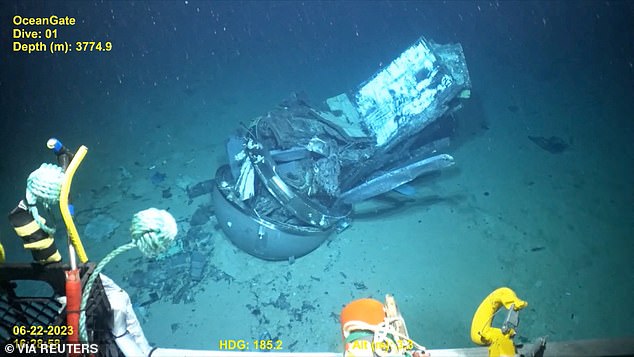
The US Coast Guard shared images showing the remains of the Titan on the seabed
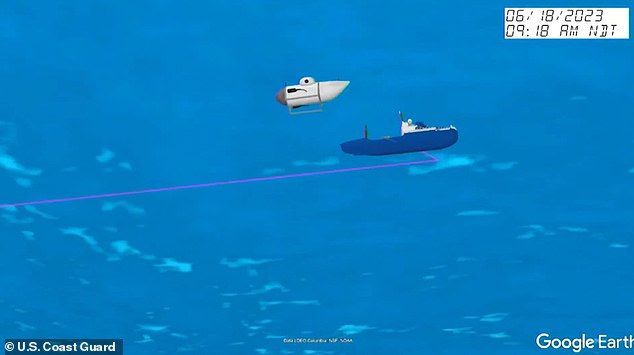
A 3D simulation attempts to trace the movements of the Titan before its fatal implosion
“We realized that the only thing we could do was go around in circles and turn right,” Hagen said. “At that point, we obviously weren’t going to be able to sail to the Titanic.”
Hagen said the Titan dropped the weights, returned to the surface and the mission was called off. He said he was aware of the potentially unsafe nature of boarding the experimental submersible.
“Anyone who wanted to go was either delusional if they didn’t think it was dangerous, or they were taking the risk,” he said.
OceanGate co-founder and Titan pilot Stockton Rush was among five people killed when the submersible imploded en route to the Titanic wreck site in June 2023.
Earlier this month, the Coast Guard opened a public hearing that is part of a high-profile investigation into the cause of the implosion. The public hearing began Sept. 16, and some of the testimony has focused on problems the Washington state company was having before the fatal 2023 crash.
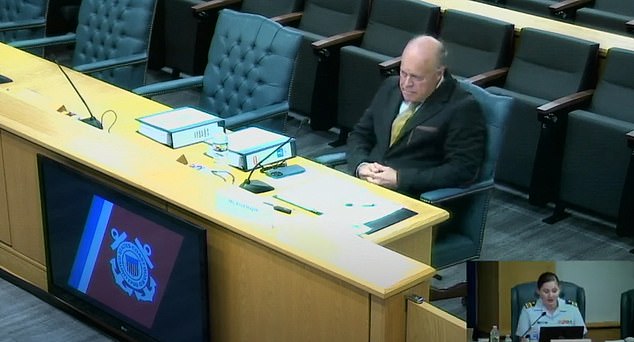
Fred Hagen was the first to testify Friday and was identified as a “mission specialist,” which he and other witnesses have characterized as people who paid a fee to play a role in OceanGate’s underwater exploration.
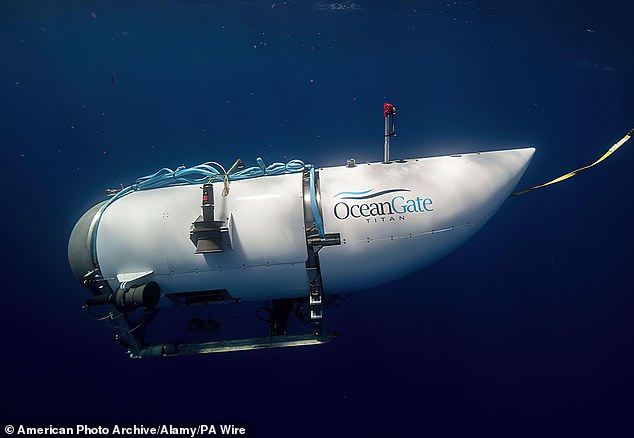
The Titan disappeared on June 18, 2023. There were five people inside when it imploded.

All five people on board the ship died in the tragedy, including OceanGate founder Stockton Rush (top right), three Britons including adventurer Hamish Harding (top left) and father and son Shahzada and Suleman Dawood (bottom right), as well as Frenchman Paul-Henri Nargeolet (bottom left).
During testimony Thursday, the company’s chief scientific officer, Steven Ross, told investigators that the submarine suffered a breakdown just days before the Titanic dive. Earlier in the week, OceanGate’s former chief operating officer, David Lochridge, said he frequently clashed with Rush and felt the company was only in it for the sake of making money.
“The idea behind the company was to make money,” Lochridge testified. “There was very little in the way of science.”
Meanwhile, another former OceanGate mission specialist, Renata Rojas, burst into tears yesterday before recounting her agonising wait for the doomed Titan submersible to resurface.
She described her role in helping launch the ship last June and said everyone on board understood the risks involved in plunging into the depths of the Atlantic Ocean.
“It was never sold as a Disney attraction,” he said. “It was an expedition where… things happen and you have to adapt to changes.”
Ms Rojas was aboard the icebreaker Polar Prince on the surface when the Titan lost contact on June 18 last year.
He said one of his final reports was, “All good here.”
But the witness became emotional and began to cry as he recalled how the submarine then stopped sending updates.
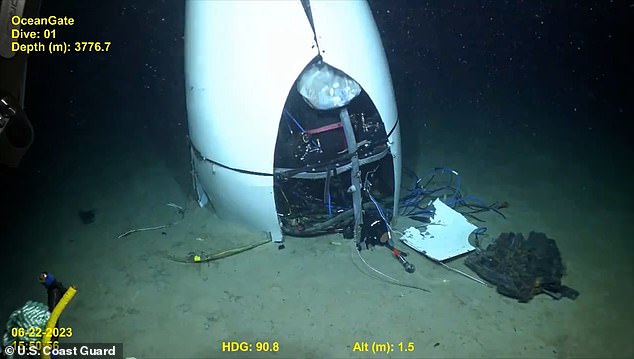
The US Coast Guard shared images of the tail cone of the Titan’s remains

She broke down in tears during her testimony in North Charleston on Thursday.
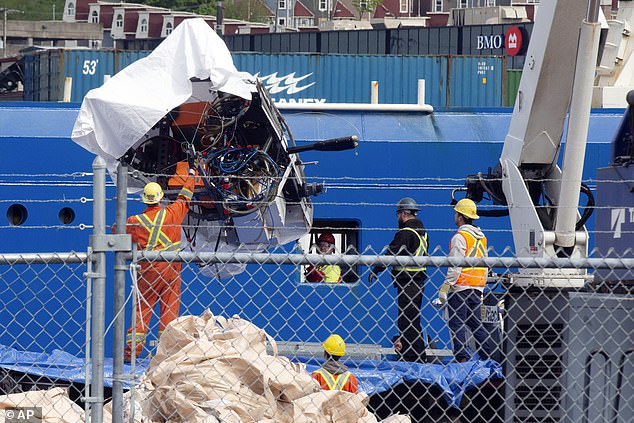
The remains of the Titan submersible, recovered from the ocean floor near the wreck of the Titanic, are unloaded from the ship Horizon Arctic at the Canadian Coast Guard dock in St. John’s, Newfoundland, Wednesday, June 28.
The US Coast Guard has released a chilling 3D reconstruction of the Titan’s final voyage showing its final movements, after new images of the wreckage on the seabed were also revealed, taken days after the tragedy occurred.
The hearing is expected to resume next week and continue until September 27.
Among other witnesses who appeared Friday was engineer Dave Dyer of the University of Washington’s Applied Physics Laboratory. Dyer provided details about the lab’s relationship with OceanGate while its submersible was in development.
“The intention was to bring engineering expertise to OceanGate,” Dyer said.
Lochridge and other witnesses have painted a picture of a company run by people who were eager to get the unconventionally designed vessel on the water. Lochridge said he filed a complaint with the federal Occupational Safety and Health Administration about the company. OSHA “quickly referred its safety allegations regarding the Titan submersible to the Coast Guard,” an agency spokesman said Thursday.
The deadly accident sparked a global debate about the future of private underwater exploration. Coast Guard officials noted at the start of the hearing that the submersible had not been independently evaluated, as is standard practice. That and the Titan’s unusual design brought it under scrutiny in the underwater exploration community.
But Renata Rojas, a mission specialist for the company, told the Coast Guard that the company had competent personnel who wanted to “make dreams come true.” Rojas’ testimony struck a different tone than some of the previous witnesses.
“I was learning a lot and working with amazing people,” Rojas said. “Some of those people are very hard-working individuals who were just trying to make their dreams come true.”
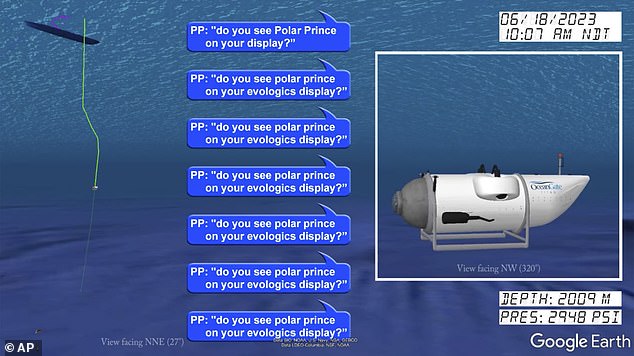
The Polar Prince desperately tried to reach the Titan after losing contact on the morning of June 18.
OceanGate suspended operations after the implosion. The company currently has no full-time employees, but has been represented by a lawyer during the hearing.
During the submersible’s final dive on June 18, 2023, the crew lost contact after an exchange of text messages about the depth and weight of the Titan as it descended. The support ship Polar Prince then sent repeated messages asking if the Titan could still see the ship on its onboard display.
One of the Titan crew’s last messages to the Polar Prince before the submersible imploded read “all good here,” according to a visual recreation presented earlier in the hearing.
When the submersible was reported missing, rescuers sent ships, planes and other equipment to an area about 700 kilometres south of St. John’s, Newfoundland. Four days later, wreckage from the Titan was found on the ocean floor about 300 metres from the Titanic’s bow, Coast Guard officials said. No one on board survived.
OceanGate said it has been fully cooperating with the Coast Guard and NTSB investigations since they began. The Titan had been conducting trips to the Titanic wreck site since 2021.
(tags to translate)dailymail


